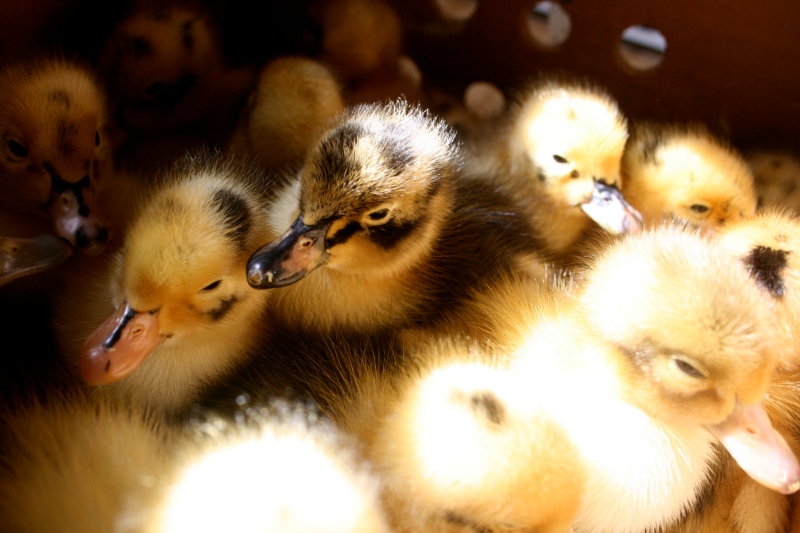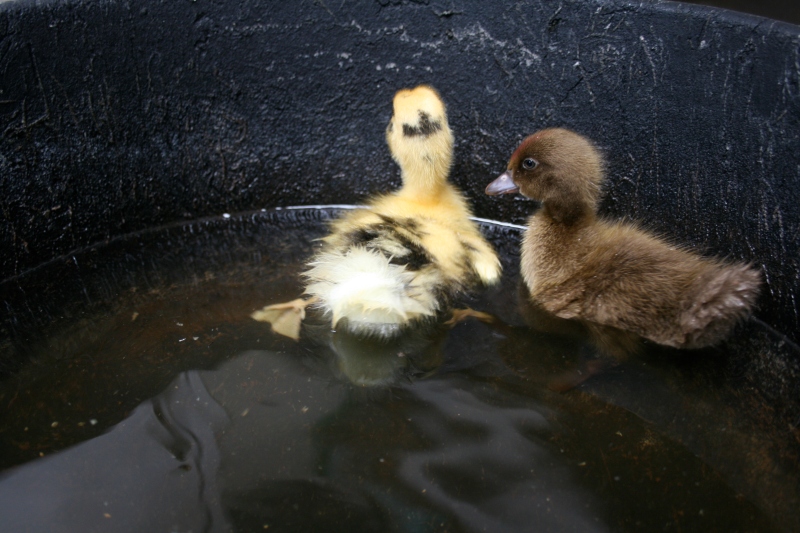This week we added ducks and turkeys to our gaggle of farm animals. They arrived via USPS, a week later than expected making us ready for their arrival (for once). Chris says we have enough animals now- but I am still holding out for a birthday pair of milk goats, or better, a milk cow. Our landlord wants to buy us alpacas.
We both agree that out of all the spring babies, the baby ducks are by far the cutest. We received a variety of rare, egg-laying breeds.
In honor of their arrival, a friend from work shared some of her duck eggs with us, as well as one over-sized goose egg. I enjoy just holding it and can’t bring myself to eat it.
Duck eggs are much larger than chicken eggs, their white shells are more translucent, and the yolks are huge and a radiant orange in color. They are also higher in fat and cholesterol and especially good for baking. They were delicious in our crepes this week and I am already looking forward to making duck-egg ravioli once these girls get going.
We are starting their swimming lessons early, at a mere 4 days old. Chris reminded me from a second grade book report that their down coat protects them and keeps them warm. They prefer to swim with friends and must be supervised.
So far, besides making a mess of their water (which means wet, smelly bedding), they have been a cinch to raise and provide lots of entertainment with all that swimming.
The turkey poults, on the other hand, have proven to be much more fragile and unintelligent. Instead of running away, they run toward the giants in the room. Turkeys are known to “starve out” in front of a bowl of feed and water.
Things haven’t gone as smoothly as we would have liked…
We are raising Bourbon Red turkeys, a heritage breed, which are on the watch list. There are less than 5,000 of these breeding turkeys in the U.S. They date back to the 1800’s, but have been in the decline since the commercial adoption of the Broad Breasted White Turkey popular today.
Our turkeys will be able to fly, roost high up in trees (if we let them), and mate naturally. They will grow much slower than commercial turkey breeds and take 6+ months to reach their harvest weight. 6 months will put us right at mid-November. Yes.
I’m thankful that we are raising them from babies so I can get slowly get accustomed to them. Currently, I admit I’m scared of these hideous looking monsters who are mean by reputation. But I think I will one day find our adults beautiful and impressive. They sure are now.









Those baby ducks are adorable, but I am sorta smitten by the baby turkeys! Never knew they were so cute as babies–but I guess all babies are beautiful in some way.
Wonderful wonderful! Miss you, as always.
Those turkeys look scary as adults! Whoa.
Sure wish we still lived close and could sign up for one of your turkeys come Thanksgiving!